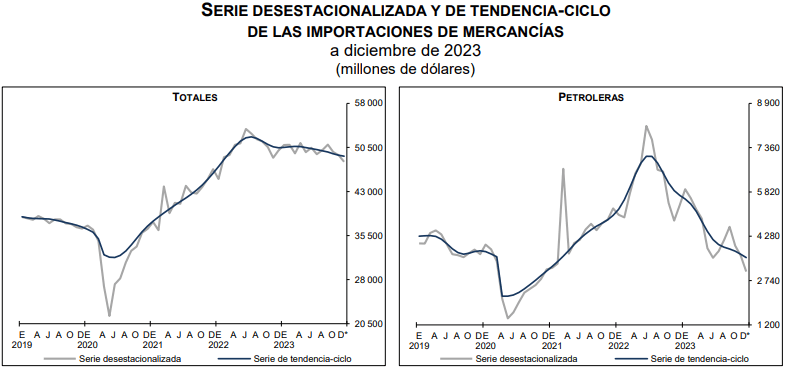Imports to Mexico fell at a year-on-year rate of 1.0% in 2023, to US$598.475 billion.
While Mexican purchases of petroleum products fell 30.2% to $51.755 billion dollars, those of non-petroleum products rose 3.1% to $546.721 billion dollars.
Mexico is the fourteenth largest economy in the world, the second largest in Latin America and the largest trading partner of the United States.

Mexico is also one of the most important international consumer markets for U.S. products.
From another angle, imports to Mexico of consumer goods totaled 87.733 billion dollars (9.3% year-on-year), imports of intermediate goods totaled 452.891 billion dollars (4.9%) and imports of capital goods amounted to 57.852 billion dollars (+20%).
Imports to Mexico
Regarding external demand, most of the members of the Board of Governors of the Bank of Mexico pointed out that it has been resilient, supported mainly by the rebound in exports from the automotive sector.
However, some noted that non-automotive exports remain weak.
Mexico’s current population is about 130 million and is expected to reach 148.2 million by 2050.
Although most Mexicans are 35 years old or younger, demographic trends continue to indicate that by 2050 the majority of the Mexican population will be 40 years old or older.
In 2021, 81% of the Mexican population lived in urban areas. Mexico City is the largest metropolitan area in the country, followed by Guadalajara, Monterrey, Puebla, Toluca, Tijuana, Ciudad Juarez and Leon.
Households earn
One percent of Mexico’s population is considered high-income, while 37 percent is middle-income and 62 percent lives below the poverty line.
In 2022, 36.3 percent of the population living below the poverty line earned $231 (or less) per month.
According to the most recent National Survey of Household Income and Expenditures conducted by inegi, Mexico’s 36 million households have an average of 3.43 people per household.
Most Mexican households earn on average $14,100 with annual expenses of $13,392, leaving little left over for savings.

